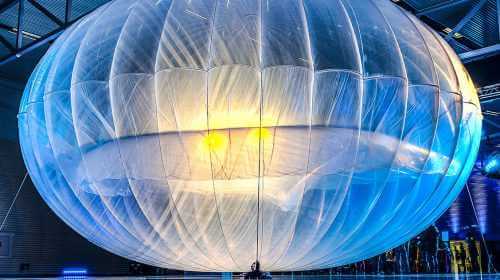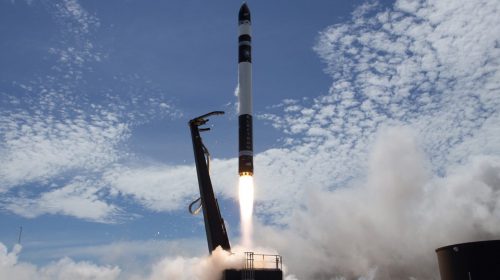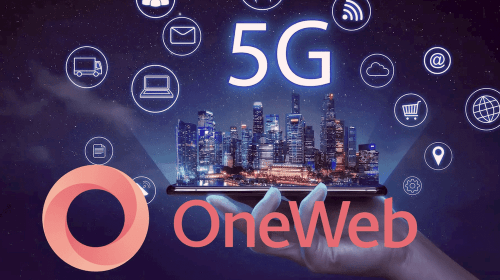May 07, 2018
Much discussion in the telecom industry today centers on the development of 5G wireless services, and the role that satellite will play as the technology is deployed. Current projections are for a half billion 5G subscriptions by 2023. The obvious role for satellites in a 5G world, is cellular backhaul, but are there other roles? Is that the full extent of satellite contribution to 5G?
5G Goals
We start with the goals for 5G wireless services, which intend to deliver a huge leap beyond the person-to-person communications of legacy wireless networks, into a device-to-device solution that the ITU (International Telecommunication Union) characterizes as “Enhanced Mobile Broadband; Ultra-reliable and Low-latency Communications; and, “Massive Machine Type Communications.” What 5G is all about is a world of devices that starts with the IoT (Internet of Things) and evolves into an Internet of Everything Everywhere (IoEE). For this vision to be successful, a high degree of integrated functionality will be required between terrestrial 5G wireless platforms, and satellite platforms.
Factors for Success
To be successful, satellite cannot be merely an “interfacing” technology. It must be fully integrated. Satellite will not play a secondary or connecting role, but rather an integrated role that supports seamless switching from terrestrial to satellite and back again. Satellite must participate in a complex network of networks. Some of the applications where this will play out include Multimedia delivery, mobile broadband to users and their vehicles, machine to machine communication, and critical disaster recovery & surveillance communications. These services will need to be delivered to all sorts of commercial vehicles, including trains, busses, armored cars, delivery vans, etc.
Satellite is a critical component because the world of IoT will require that devices remain connected regardless of where they are. WiFi, Bluetooth, and other current wireless connections provide some limited service for these devices today, but they are anything but ubiquitous, and probably never will be. Satellite will always be needed to fill holes in coverage.
There are many vertical industries that will continue to rely on satellite, such as petrochemical, agricultural, and civil engineering industries that remain outside the reach of terrestrial fixed or wireless services. These industries will be joined by the IoT and M2M industries, while consumer and enterprise broadband services expand, along with the ongoing and traditional role of cellular backhaul in rural locations – with higher speeds and lower latencies. To tie everything together, will require that all of the technologies contributing to 5G have a degree of compatibility, common messaging, and management and monitoring, hooks.
Bringing the Players Together
In June 2018, for the first time, the annual GVF-EMP event will be embedded into another event KNect365 5G World, IoT World, Smart Transportation in London, with the goal of working towards 5G integration with satellite services. The GVF (Global VSAT Forum) is a single, unified voice of the global satellite industry, founded in 1997 to bring organizations together to advance the delivery of broadband and narrowband satellite services. The GVFs membership represents all facets of the industry on a global basis. The EMP (Event Management Partners) Partnership created in 2006, develops and facilitates networking dialogue within the satellite industry and between the industry and user communities of other communications solutions. On the satellite side, the GVF-EMP event is hosted by Comtech EF Data, Hughes, Newtec, SES Networks, iDirect, Gilat Satellite Networks, and ND SatCom, providing a good mix of satellite ground and space technology representatives.
The one-day event recognizes that the satellite industry has mostly been focused on a few vertical industries, and has done so for several decades with great success. Now, however there is an opportunity for satellite to move closer to center stage, and to support users and applications across a much wider spectrum. Satellite is being seen as no longer a niche player. If true ubiquitous connectivity is to prevail, satellite’s role will grow, such that it may no longer be considered the option of last resort.
Significant work lies ahead to ensure seamless integration. The GVF-EMP event will tackle a wide range of subjects, starting with the history of satellite providing backhaul for pre-5G networks, and examining how satellite will extend this to new 5G services. Questions abound, such as where satellite stands today in delivering 5G functionality, how to merge broadcast and broadband infrastructures, where existing and new HTS (High Throughput Satellites) GEO satellites fit, how to incorporate the NGSO (Non-Geosynchronous Orbit) constellations being prepared for deployment, and more. Discussions will take place regarding the ubiquity of satellite footprints, the role they will play in the IoT and M2M markets, smart cities, connected cars, as well as the encryption, security, and switching to integrate all of this together. It’s quite a task, but the good news is that the industry is starting early, and working together for the mutual benefit of all the participants, and their clients.
Program details, regular updates, and other event information for the GVF-EMP event may be viewed at www.uk-emp.co.uk/current-events/cellular-backhaul-2018/.





